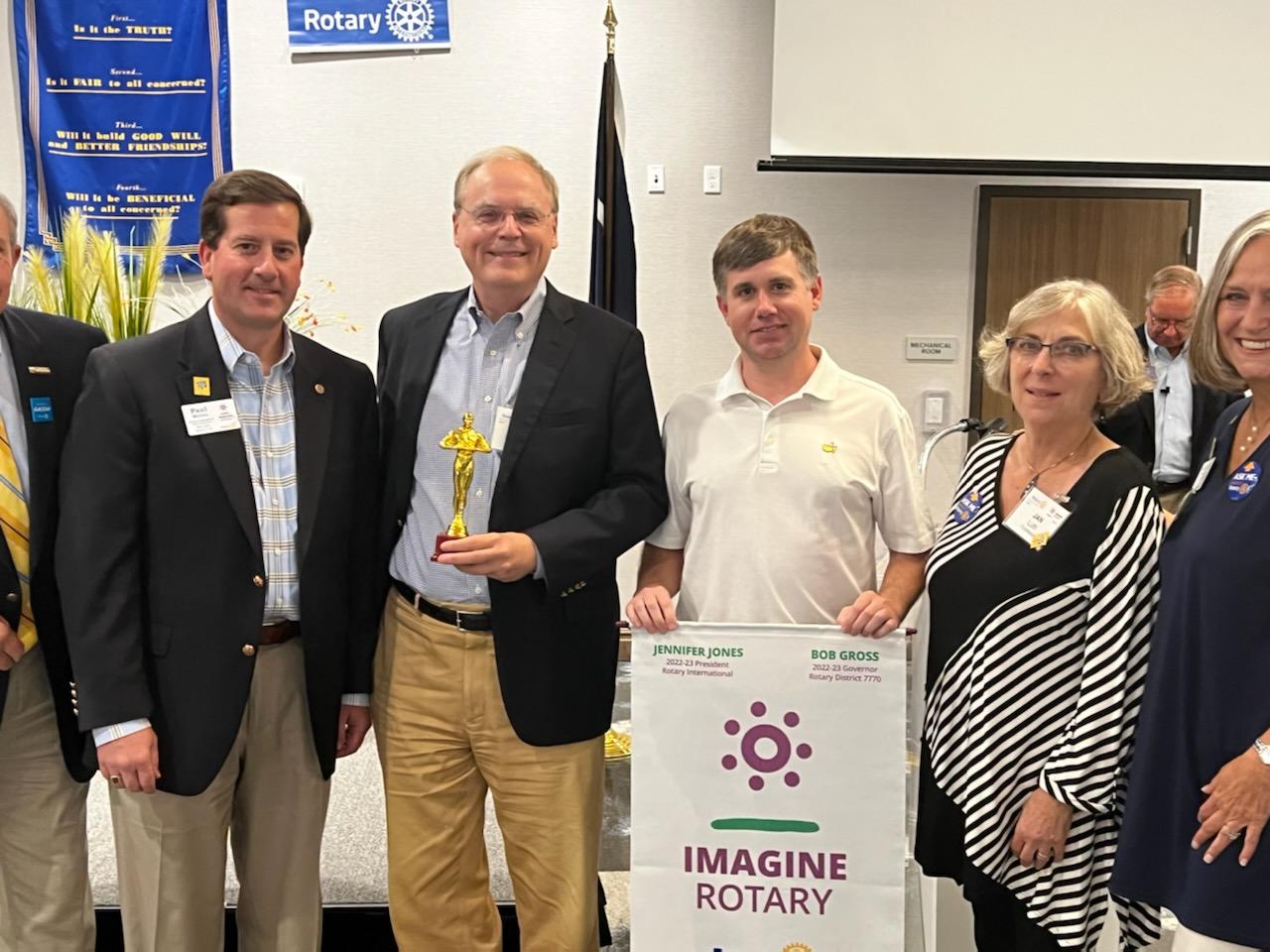CHARLESTON SCHOOL OF LAW
Feb. 2, 2010: Charleston School of Law Dean Andy Abrams linked the spirit of Rotary service to the kind of appreciation for public service that is being taught to the 660 students at the law school.
During an entertaining presentation, Abrams said Rotary’s missions of service to others, promoting ethical behavior, and instilling goodwill and peace were almost a mirror of the law school’s mission. Among the six-year-old law school’s goals are:
– To teach students of high moral character and unquestioned personal integrity through a careful and refined study program;
– To teach the practice of law as a profession, having as its chief aim providing public service;
– To teach the law as a means of providing relief for those who suffer because they are helpless, weak, outnumbered, or because they are victims of prejudice;
– To teach the law as a means of alleviating human misery and human suffering;
To teach the law as a means of making possible the continued processes of manufacture and commerce that bring realization to the twin goals of prosperity and peace in the world; “Our goal is to impact the lives of our students with a high-quality legal education so they can, in turn, impact their communities,” he said. “What makes us unique is this mission of service above self – the very words you use.”
In the last five years, students have contributed more than 100,000 hours of public service through pro bono and externship programs locally and across the nation, Abrams said. Every student is required to give back 30 hours of free legal service before they can graduate. Some examples of public service by students: working on maritime issues in New York, an annual program in which eight students travel in the summer to work at the Ugandan Supreme Court to promote democratic institutions; a mediation program with the county school district; and helping Crisis Ministries.
Abrams said the quality of the education that students were receiving was unparalleled. Last summer, for example, 91 percent of first-time takers of the SC Bar who had been full-time students passed the exam, he noted. “That is competitive with any law school anywhere.”
Abrams also said the school worked hard to provide job opportunities for students after they finished law school. More than 90 percent of graduates are able to get employment with the help of the school, he said.
Abrams ended his talk with a “preemptive strike” about a question he always hears – “Aren’t there too many lawyers?” He said that since there were more people in South Carolina than lawyers, “we’re going to keep at it until you each have one of your own!”
More: http://www.charlestonlaw.edu
Submitted by Andy Brack, Keyway Committee


